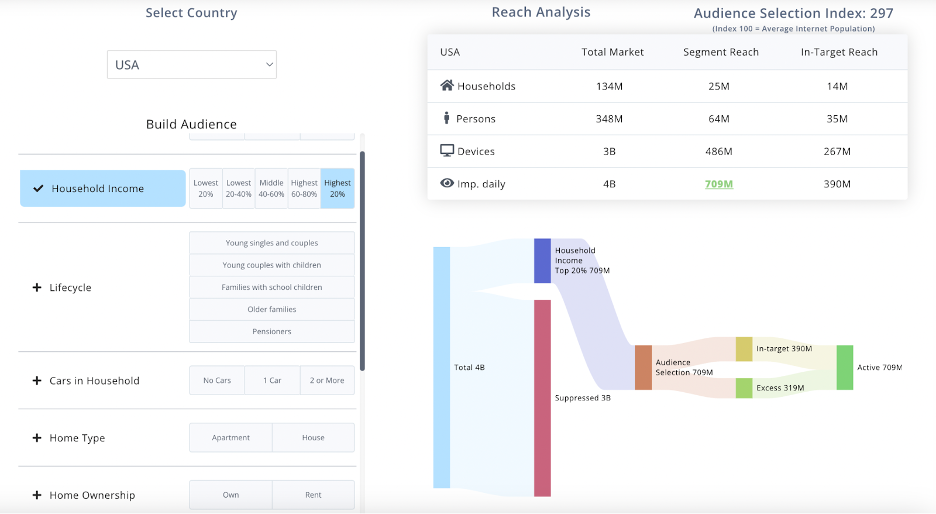
In this series, Admonsters will examine some cookie-free alternatives to audience development and targeting. This time, we’re delving into the value of public data.
To Søren H. Dinesen, CEO and Co-Founder of Digiseg, third-party cookies can’t go away fast enough. He never liked the assumptions that third-party cookies forced people in the industry to make to tell stories about their audiences and determine who to target.
“Someone can spend a lot of time reading about solar panels on multiple websites, but if they rent an apartment in an urban area, they’re not a good prospect for panel manufacturers,” he explained. “This is the challenge with third-party cookies. People visit sites for a variety of reasons. But purchasing requires a specific need, like owning a house with a roof can actually accommodate those solar panels.”
Kevin Kowalick, VP of Strategy for Media & Entertainment at TransUnion“ agrees. “Audience building is most effective when it is tied to real individuals and households as opposed to just devices. Demographic and consumer data rooted in the offline world provides a highly predictive basis for targeting. For example, income, home ownership, and presence of children are strong signals as to whether a consumer or viewer of programming or reader of content is a good fit for a brand’s offerings.”
Enter public data offered by a growing number of companies, including Digiseg, TransUnion, and Simpli.fi.
The Value of Public Data
Every country collects data on its citizens, including the number of household members, presence of children, household income and education levels, age, race, marital status, neighborhood characteristics, and so on. This data can be useful to publishers who want to tell better stories about their readers and to marketers who want a cookie-free alternative to targeting.
The benefits to public data proponents are apparent: It’s accurate, verified, and scrubbed of all PII data before it’s released to the market. If you’re a brand and you want to reach dads with ads for radial tires, target ZIP codes that over-index for households with children and multiple cars.
This is the approach the Simpli.fi took when it introduced ZTV last summer. The company built a proprietary platform comprising more than 41,000 ZIP codes. It then mapped census data, including various demographic and economic attributes to each ZIP code. The third piece of the puzzle is automated content recognition (ACR) data. To target an audience, an advertiser can target ZIP codes that over-index for desired attributes, such as home ownership and high-end autos, and content that over-indexes for a specific demographic, such as NFL games and men.
“Our ZTV solution provides competitive pricing while delivering CTV advertising on high-quality inventory with granular reach and frequency measurement at the household level. With the upcoming depreciation of the third-party cookie, this is a future-proof solution that will allow advertisers’ campaigns to be highly effective at a lower CPM,” explained James Moore, Chief Revenue Officer at Simpli.fi.
Digiseg offers a similar approach. The company provides 39 core audiences (home type, own v. rent, income, education level, presence of children, etc.) and several composite audiences, such as those interested in travel, computer games, or online betting.
Publisher AdOps team can apply an audience tag to their sites to gain insight about their readers. Digiseg can map the user to any of its core or composite audiences based on the user’s IP address. This insight tells the AdOps team which readers like computer games or live-in neighborhoods rental apartment units. Digiseg data reaches 348 million people in the US across 134 million households and 3 billion devices. (ZTV reaches 126 million households.)
Digiseg’s online audience builder lets marketers build an audience and see how many people they can reach by device type.
A Focus on Long-Term Characteristics
According to Dinesen, a key value of public data provided by the Census Bureau and National Statistics offices is that it validates long-term consumer needs. Couples who have children will raise them for 18 years before they go off to college; people who own homes in suburbia will need garden supplies for as long as they live in their houses. AdOps teams of a national publication can use this data to build audience segments of people likely to purchase based on the attributes of their neighborhoods and households. For instance, an EV manufacturer can target neighborhoods where such cars are popular and whose residents are more apt to have the means to buy one.
“Traditional audience segments are based on stereotypes, such as anyone who buys baby products is a woman aged 25 to 35, but there are plenty of gay men who have children, and they’ll buy a range of products for those kids for about two decades,” Dinesen said.
Long-term characteristics are useful for building an upper funnel but can be a challenge for performance-based campaigns. One can identify households that need auto parts or school supplies, but not when consumers will need a specific item. But Dinesen says performance marketers enjoy great success with Digiseg’s audience segments because the targeted consumers have a validated need for the product category.
Public data may not be the right solution in every use case, but it offers a compelling, and cookie-free solution for audience development and insights. AdOps teams and marketers can use it to understand the long-term characteristics and needs of their readers.
